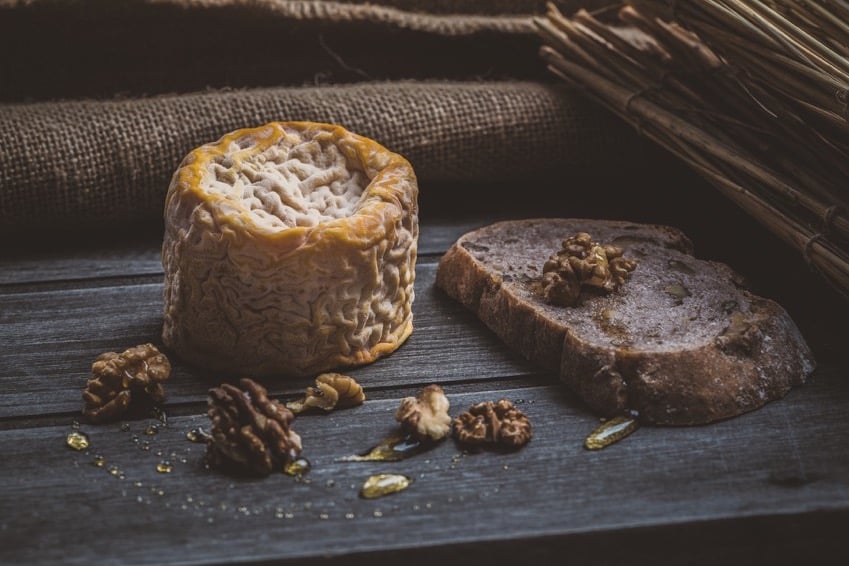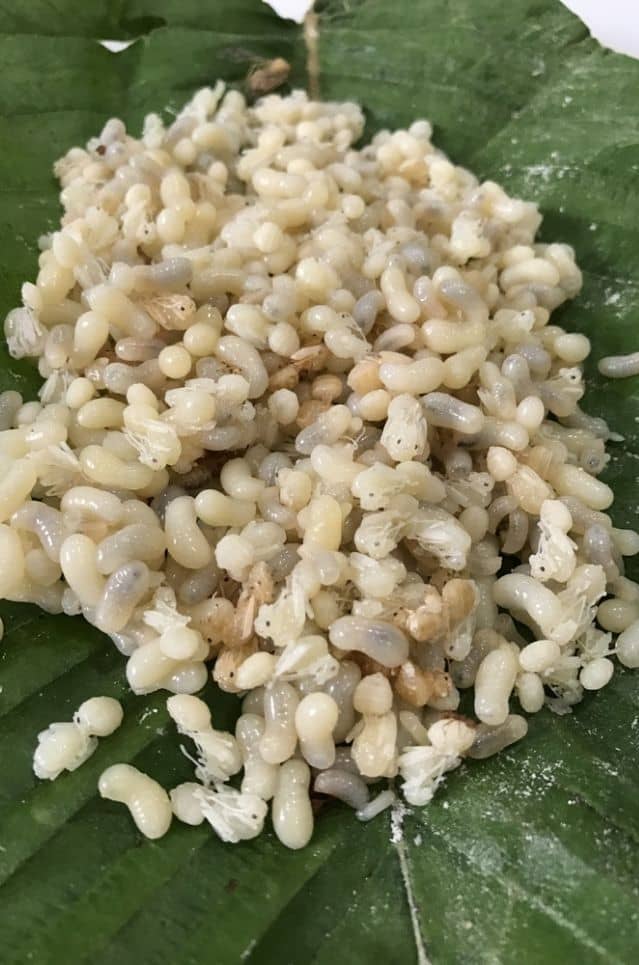Balut

Balut is a Filipino delicacy that is made from fertilized duck eggs. The eggs are incubated for about 17 days until the embryo is partially developed, then they are boiled and eaten in the shell. Balut is often sold by street vendors and is a popular snack in the Philippines. The yolk is rich and flavorful, while the texture of the partially developed duck is soft and tender. Some people find the idea of eating a partially developed embryo unappetizing, but for others, it is a beloved cultural delicacy.
Haggis

Haggis is a traditional Scottish dish that is made from sheep’s heart, liver, and lungs, which are minced and mixed with onion, oatmeal, and spices. The mixture is then stuffed into a sheep’s stomach and boiled. Haggis has a savory, meaty flavor and a slightly crumbly texture. It is often served with neeps and tatties (turnips and potatoes) and is a traditional dish served on Burns Night, a Scottish holiday honoring the poet Robert Burns. Haggis is considered a national dish of Scotland and is enjoyed by many.
Casu Marzu

Casu Marzu is a traditional Sardinian cheese that is intentionally infested with live cheese fly larvae. The larvae digest the cheese and produce a soft, creamy texture. The cheese is often eaten with Sardinian flatbread and has a nutty, pungent flavor. The larvae are still alive when the cheese is consumed, which can be off-putting to some. The cheese has been banned by the European Union for health and hygiene reasons, but it is still consumed illegally in Sardinia.
Escamoles

Escamoles are the edible larvae of the black ant, and are considered a delicacy in Mexico. The larvae are collected from the roots of agave plants and have a slightly nutty flavor. They are often prepared by frying them with butter and onions, and are served with tortillas. Escamoles have been described as tasting similar to cottage cheese or pine nuts. Despite their popularity in Mexican cuisine, some people are hesitant to try escamoles due to the fact that they are insects.
Fried Tarantulas
Fried tarantulas are a popular snack in Cambodia, where they are harvested from the forest and sold by street vendors. The spiders are usually fried in oil and seasoned with garlic, salt, and sugar. The legs are crispy and the body has a soft, meaty texture. Fried tarantulas have been described as tasting similar to crab or shrimp. They are often eaten as a snack with drinks, and are believed to have medicinal properties.
Hakarl
Hakarl is a traditional Icelandic dish that is made from the meat of the Greenland shark. The meat is fermented for several months, then hung up to dry for several more months. The resulting meat has a pungent, ammonia-like odor and a chewy texture. It is often served in small cubes and eaten with a shot of schnapps. Hakarl is an acquired taste, and many people find the smell and taste unpleasant.
Rocky Mountain Oysters
Rocky Mountain Oysters are a dish made from the testicles of bulls or other male animals. The testicles are usually sliced, battered, and deep-fried. They are often served as a bar snack or as a main dish at events such as rodeos. Rocky Mountain Oysters have a mild, meaty flavor and a chewy texture. They are often compared to fried calamari or chicken gizzards.
Century Eggs
Century Eggs are a Chinese delicacy that is made by preserving duck, chicken, or quail eggs in a mixture of clay, ash, salt, quicklime, and rice straw for several weeks to several months. The eggs undergo a chemical reaction during the process that changes their texture and flavor. The egg whites turn into a jelly-like substance while the yolk becomes a creamy, pungent custard. The flavor is often described as rich, savory, and slightly salty. Century eggs are commonly eaten as a snack or as a side dish with congee (rice porridge).
Black Pudding
Black pudding is a type of sausage made from pig’s blood, suet, oatmeal, and spices. The mixture is cooked and then set in a casing. It has a deep, rich flavor and a crumbly texture. Black pudding is a traditional food in the United Kingdom and Ireland, and is often served as part of a full breakfast. It is also used as an ingredient in other dishes, such as black pudding fritters or black pudding-stuffed chicken.
Jellied Moose Nose
Jellied moose nose is a traditional dish from Canada that is made by boiling a moose’s nose with spices and seasonings until the meat is tender. The meat is then removed from the bones and sliced, and the broth is mixed with gelatin to form a jelly. The slices of meat are then arranged in the jelly, which is left to set. The dish is often served cold, sliced like a terrine. It has a rich, gamey flavor and a chewy texture.
Stargazy Pie
Stargazy pie is a traditional Cornish dish that consists of a pie filled with fish, eggs, potatoes, and onions, with the fish heads protruding through the pastry crust. The dish is said to have originated from a legend about a fisherman who caught a large number of fish during a storm, and had to cook them all in one pie to prevent them from spoiling. The pie is often served on December 23rd, known as Tom Bawcock’s Eve, and is a popular dish during the Christmas season. Stargazy pie has a savory, fishy flavor and a flaky pastry crust.
Fugu
Fugu is a Japanese dish made from the meat of the pufferfish. The pufferfish contains a potent neurotoxin that can be deadly if not prepared correctly. Only licensed chefs are allowed to prepare fugu, and the dish is considered a delicacy in Japan. The flesh of the fish is sliced thinly and served raw, often with a dipping sauce. Fugu has a delicate, subtle flavor and a firm, chewy texture.
Surstromming
Surstromming is a traditional Swedish dish made from fermented herring. The herring is caught in the spring and then fermented in barrels for several months. The resulting fish has a pungent, ammonia-like smell and a soft, creamy texture. It is often served with flatbread and potatoes, and is eaten as a snack or as part of a meal. Surstromming is an acquired taste, and many people find the smell and taste overwhelming.
Fried Brain Sandwiches
Fried brain sandwiches are a delicacy in the United States, particularly in the Midwest. The sandwich consists of sliced cow or pig brain that is coated in flour, fried, and served on a bun with lettuce, tomato, and mayonnaise. The brain has a creamy texture and a mild flavor. Fried brain sandwiches have a long history in the United States, dating back to the 19th century when they were popular in working-class neighborhoods.
Bird’s Nest Soup
Bird’s nest soup is a traditional Chinese delicacy made from the nests of swiftlets. The nests are made from the bird’s saliva and are collected from caves or buildings. The nests are cleaned and soaked in water, then boiled with chicken broth and sometimes served with shredded chicken. Bird’s nest soup is said to have numerous health benefits, such as improving skin complexion and boosting the immune system. It has a mild flavor and a gelatinous texture.
Hakarl
Hakarl is a traditional Icelandic dish made from fermented shark meat. The meat is buried in the ground and fermented for several months, then hung up to dry for several more months. The resulting meat has a pungent, ammonia-like smell and a chewy texture. It is often served as a snack or as part of a traditional Icelandic meal, along with potatoes and a shot of schnapps. Hakarl is an acquired taste and is not for everyone.
Huitlacoche
Huitlacoche, also known as corn smut, is a fungus that grows on ears of corn. The fungus has a grayish-black appearance and is considered a delicacy in Mexico. It has a slightly sweet, earthy flavor and a slightly slimy texture. Huitlacoche is often used as a filling for quesadillas or as an ingredient in soups and stews.